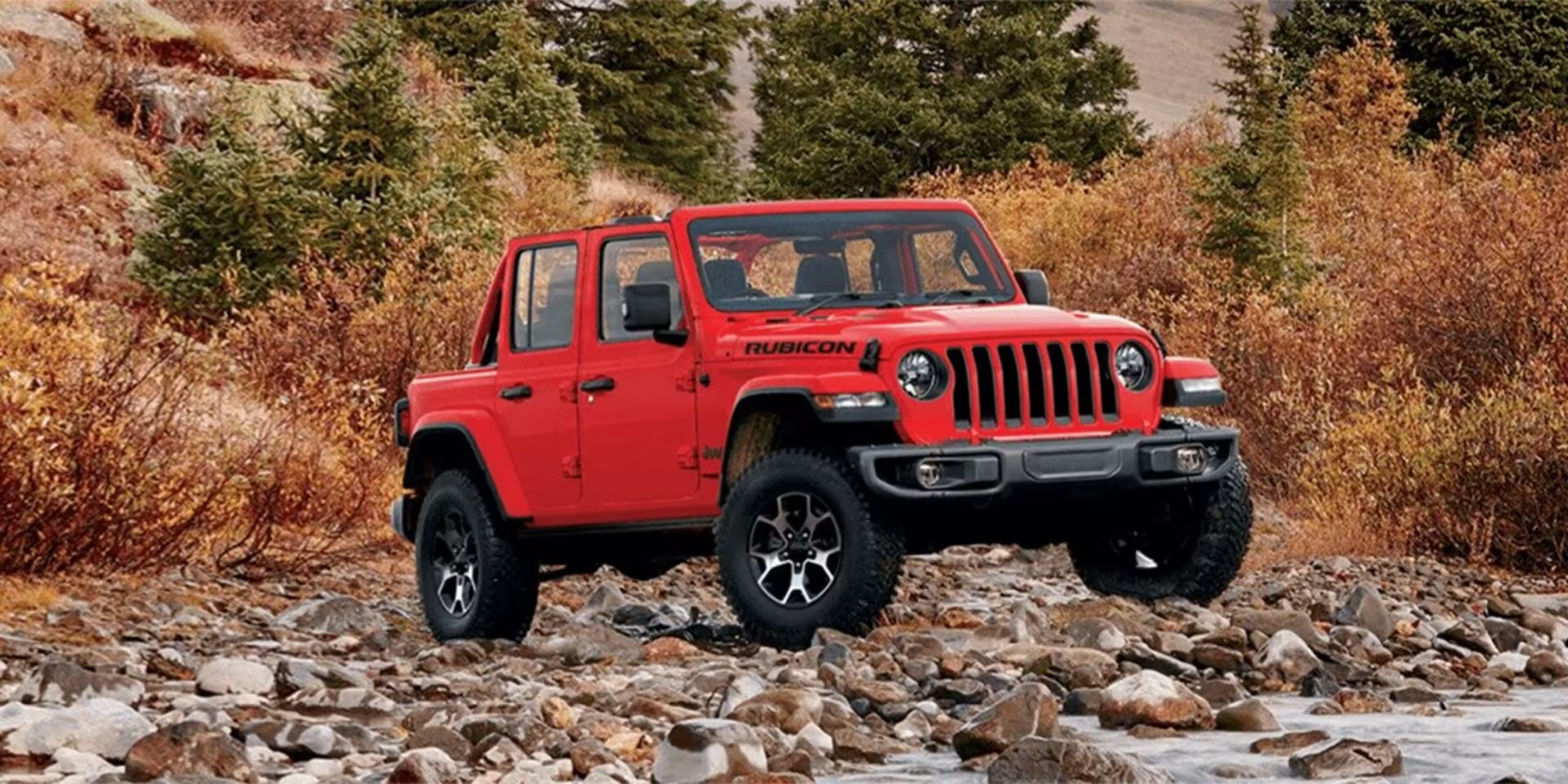Off-roading with a Jeep is an exhilarating experience. Whether you’re a seasoned adventurer or just starting, nothing beats the thrill of navigating rugged terrains in a Jeep built to handle the toughest conditions. However, off-roading is more than just hopping in your vehicle and hitting the trails. It requires preparation, the right equipment, and knowledge of the terrain to ensure a safe and enjoyable experience.
In this comprehensive guide, we’ll walk you through the essential off-roading tips for your Jeep adventure. From understanding your Jeep’s capabilities to selecting the best trails, we’ll cover everything you need to know before you embark on your next off-road journey.
1. Know Your Jeep’s Capabilities
Before you venture into the wild, it’s crucial to familiarize yourself with your Jeep’s capabilities. Not all Jeeps are built the same, and understanding what your specific model can handle will help prevent unnecessary risks. Key features to be aware of include:
- Ground Clearance: The higher your Jeep sits from the ground, the better it can clear obstacles like rocks, logs, and uneven terrain.
- Approach, Breakover, and Departure Angles: These angles determine how steep a hill or obstacle your Jeep can handle without scraping the front, middle, or rear.
- 4WD System: Most Jeeps come with a 4×4 drive system, but it’s essential to understand when and how to use it. Low-range 4WD is perfect for slow, technical off-roading, while high-range 4WD is ideal for faster, less demanding trails.
Actionable Tip:
- Read your Jeep’s manual to understand its off-road features. Different Jeep models, such as the Wrangler, Cherokee, and Gladiator, have varying capabilities.
2. Tire Pressure Matters
One of the most important aspects of off-roading is tire pressure. Lowering your tire pressure increases the tire’s surface area, giving it more grip and improving traction over loose surfaces such as sand, mud, and rocks. However, tire pressure that’s too low can cause sidewall damage or even result in a tire coming off the rim.
How Low Should You Go?
- For general off-roading, dropping your tire pressure to around 20 psi is a good starting point.
- In softer terrain like sand, you might lower it even further to 12-15 psi for maximum traction.
Remember to reinflate your tires to the appropriate levels before driving on regular roads to avoid excess wear.
Actionable Tip:
- Always carry a tire pressure gauge and a portable air compressor. These tools will allow you to adjust your tire pressure depending on the terrain and ensure your tires are in optimal condition for your journey home.
3. Invest in Recovery Gear

Even the most experienced off-roaders can get stuck from time to time. Whether you’re bogged down in the mud or stuck on a rock, having the right recovery gear can be the difference between getting out quickly and spending hours in frustration.
Must-Have Recovery Gear:
- Tow Straps: Ensure you have strong, durable straps to pull your vehicle out of tricky situations.
- Winch: A winch is a game-changer, especially if you off-road solo. Make sure it’s rated for the weight of your Jeep.
- Shackles: These are used to connect your recovery straps to a tow point on your vehicle.
- Hi-Lift Jack: This versatile tool is essential for changing tires and getting your vehicle unstuck.
Actionable Tip:
- Keep a well-organized recovery kit in your Jeep at all times. Practice using your recovery gear in controlled settings before heading into more challenging off-road environments.
4. Choose the Right Trail for Your Skill Level

The temptation to tackle the toughest trails is real, but it’s vital to pick a trail that matches your skill level and your Jeep’s capabilities. Most off-road trails are rated by difficulty, so start with easier routes if you’re new to off-roading.
Trail Ratings:
- Easy: Typically gravel or dirt roads that any stock Jeep can handle.
- Moderate: Includes some uneven terrain, rocks, and small water crossings.
- Difficult: Requires technical driving skills, with large obstacles, steep climbs, and deep water crossings.
As you gain more experience, you can work your way up to the more challenging trails, but always know your limits.
Actionable Tip:
- Research trails beforehand. Websites, forums, and apps like AllTrails and OnX Offroad provide valuable information on the difficulty and condition of off-road trails.
5. Plan for Weather and Terrain Conditions
Weather and terrain play a significant role in off-roading, as they can change trail conditions quickly. Rain can turn a dry trail into a mud pit, while snow and ice can make obstacles more treacherous. Additionally, understanding the type of terrain you’ll be traversing—whether it’s sand, mud, rocks, or snow—is key to preparing your Jeep and your driving strategy.
Terrain Tips:
- Mud: Keep your momentum, and avoid sudden stops, as mud can easily bog down your Jeep.
- Rocks: Drive slowly and use low-range 4WD to crawl over rocks without damaging your undercarriage.
- Sand: Lower your tire pressure, keep a steady speed, and avoid sharp turns to prevent getting stuck.
- Snow: Use chains if necessary and be cautious of ice patches that can cause you to lose control.
Actionable Tip:
- Check the weather forecast and trail conditions before heading out. Be flexible with your plans in case conditions become unsafe.
6. Master the Art of “Treading Lightly”

Off-roading is an incredible way to explore nature, but it’s essential to minimize your impact on the environment. The “Tread Lightly” principle encourages responsible off-roading to ensure trails remain open and natural habitats stay protected.
Key Treading Lightly Principles:
- Travel Responsibly: Stay on designated trails and avoid creating new paths.
- Respect Wildlife: Avoid disturbing animals and their habitats.
- Leave No Trace: Pack out everything you bring in, including trash and spare parts.
- Be Considerate of Others: Yield to other off-roaders, hikers, and bikers, and keep noise to a minimum.
By following these principles, you can ensure that future generations can enjoy off-roading as much as you do.
Actionable Tip:
- Join organizations like Tread Lightly or the Jeep Badge of Honor program to learn more about responsible off-roading and earn recognition for completing trails.
7. Stay Prepared with Proper Safety Measures
Safety should always be a top priority when off-roading. Taking a few extra precautions can prevent injuries, breakdowns, and other emergencies.
Safety Essentials:
- First-Aid Kit: Pack a well-stocked first-aid kit to handle any injuries or medical emergencies.
- Water and Food: Always carry enough water and non-perishable food in case you get stranded.
- Spare Tire and Tools: Flat tires are common on rough terrain, so make sure you have a spare tire and the tools needed to change it.
- Communication Devices: Cell phone service may be limited in remote areas, so consider bringing a CB radio or satellite phone to stay connected.
- Fire Extinguisher: Keep a fire extinguisher in your Jeep in case of engine fires or other emergencies.
Actionable Tip:
- Inform someone of your off-roading plans, including the trail you’ll be on and your expected return time, especially if you’re going solo.
8. Learn the Basics of Off-Road Driving

Off-road driving requires a different skill set compared to everyday driving. Learning the basics will not only keep you safe but also make the experience more enjoyable.
Key Off-Road Driving Techniques:
- Momentum is Key: In challenging terrain like mud or sand, maintaining a steady pace is critical to avoid getting stuck.
- Crawl Over Obstacles: Use low-range gears to slowly and steadily crawl over rocks and other obstacles.
- Avoid Sharp Turns: Turning sharply can cause your tires to lose grip, especially in sand or mud.
- Know When to Use 4WD: Engaging 4WD when needed gives you better traction but using it on flat, paved surfaces can cause unnecessary wear.
Actionable Tip:
- Take an off-road driving course if you’re new to the sport. Many organizations and Jeep clubs offer hands-on instruction to improve your skills.
9. Go Off-Roading with a Buddy
Off-roading can be unpredictable, and it’s always better to explore trails with a companion. Having another vehicle along can make recovery easier if one of you gets stuck or encounters mechanical problems.
Actionable Tip:
- If you can’t find a buddy to go off-roading with, consider joining a Jeep club. These groups offer camaraderie, trail advice, and a safety net for challenging off-road excursions.
10. Enjoy the Adventure

At the end of the day, off-roading is about having fun and exploring the great outdoors. Don’t stress too much about every little detail, and remember that every adventure is a learning experience. With the right preparation and mindset, you’ll be ready to tackle whatever the trail throws your way.
Final Thoughts
Off-roading with your Jeep is an incredible way to connect with nature and challenge yourself. By following these essential tips—knowing your vehicle’s limits, preparing with the right gear, respecting the environment, and honing your driving skills—you can embark on safe, exciting, and unforgettable Jeep adventures. Happy trails!

